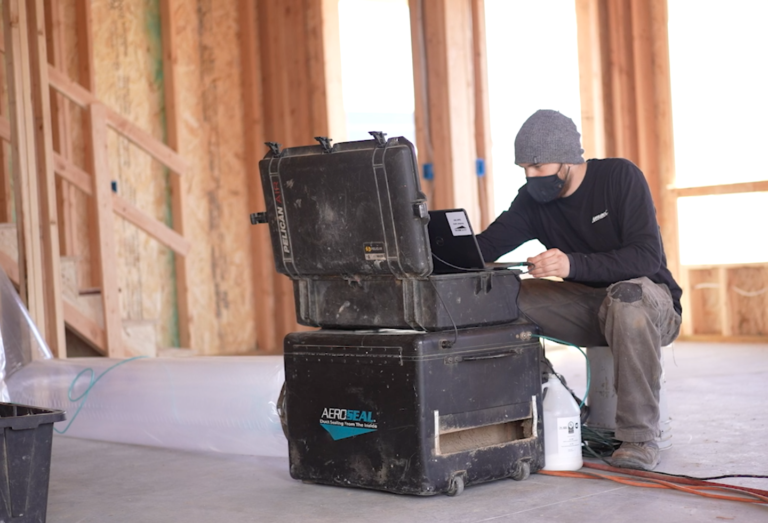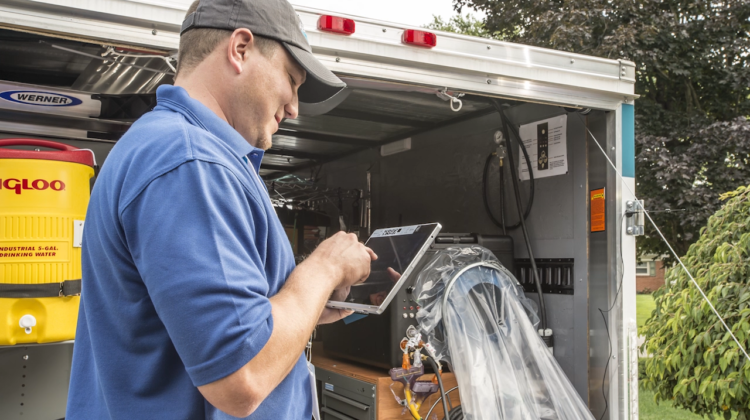According to the Department of Energy, homes and buildings consume 40% of the nation’s energy, but an average of 30% of this energy is wasted. This wasted energy is largely due to air lost from small leaks in heating and cooling ductwork, as well as the building envelope separating the interior and exterior of every structure. Even after a new heating and air conditioning system is installed, 10-30% of thermal cooling and heating is often lost to duct leakage.

Aeroseal new construction duct sealing
Lawrence Berkeley National Lab (Berkeley Lab) scientist Dr. Mark Modera and engineer Duo Wang developed a novel duct sealing technology in the 1990s. It was based on research funded in part by the DOE’s Office of Energy Efficiency and Renewable Energy (EERE), the Environmental Protection Agency (EPA), and the Electric Power Research Institute (EPRI). It uses airborne adhesive particles to seal leaks from inside of pressurized ducts, reaching previously unfixable leaks at lower cost and minimal disruption, while reducing utility bills and energy consumption.
To commercialize this innovation, Dr. Modera’s startup company Aeroseal licensed the system in 1997 for sealing ducts in residential buildings, and then licensed a further Berkeley Lab development that facilitated sealing commercial buildings in 2003. This technique has been proven to seal from 70 to 90% of duct leaks with a guaranteed life span of 10 years.
Dr. Modera evolved the technology further as a professor at the University of California at Davis, leading to licensing of a similar aerosol sealing process for leaks in building envelopes (i.e. in walls, ceilings and floors). That technology was licensed in 2016, is currently used by more than 50 companies, and has won acclaim, extending the success established by the original work at Berkeley Lab.
In the U.S. alone, Aeroseal’s technology has now been used by more than 700 contractors in 200,000 homes, and has collectively generated more than $1 billion in energy savings. The technology is also used in 27 countries around the world through its licensing model. Notable applications of this technology include projects for Pfizer Pharmaceuticals, Hyundai Motor Company, and Hilton Hotels, as well as other commercial projects in the education, healthcare, military, and government sectors.

Aeroseal retrofit residential contractor
Aeroseal recently raised $22 million in funding from Breakthrough Energy Ventures, an investor-led fund started by Bill Gates, and other private investors. The funding will help Aeroseal scale its R&D, marketing team, and increase support of its dealer network. “Aeroseal’s technology addresses a challenge found in every building: energy waste caused by undetectable and unreachable leaks,” said Carmichael Roberts, Breakthrough Energy Ventures, in a joint announcement with Aeroseal.
Aeroseal also plans to expand its workforce. It already employs 125 people, and recently announced plans to add another 25 employees. These new hires will include software engineers, hardware engineers, system engineers, and application engineers, as well as employees in manufacturing roles.
“Our technologies could take out 1 gigaton of CO2 from the world,” said Aeroseal Chief Executive Officer Amit Gupta in a recent Dayton Business Journal article. “That is huge by any stretch of the imagination. There are very few companies around the world — and very few technologies — which can have that large of an impact.”
